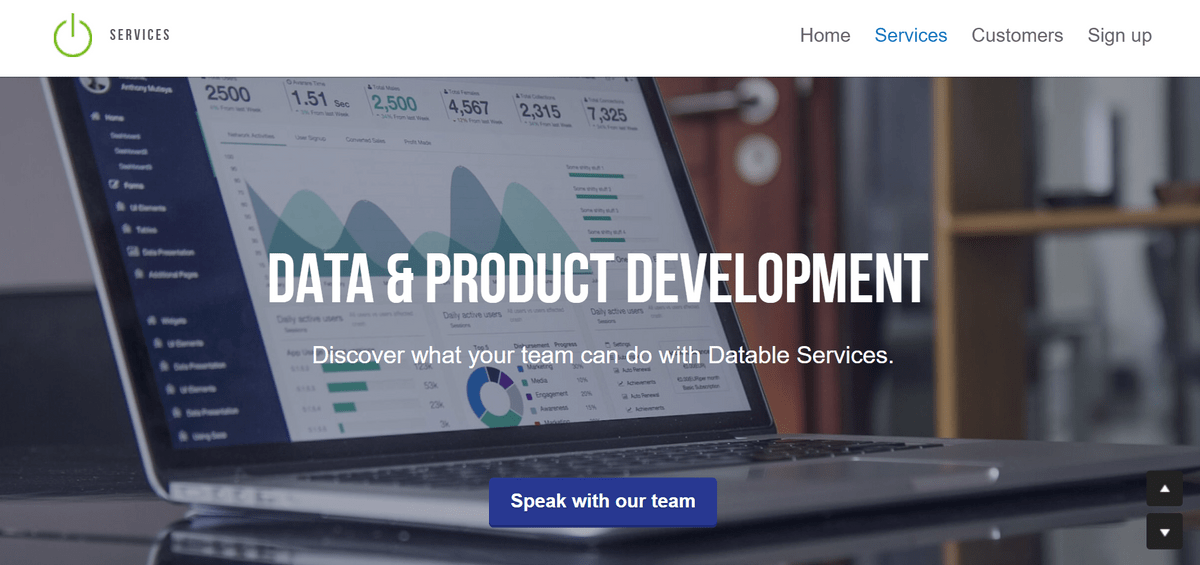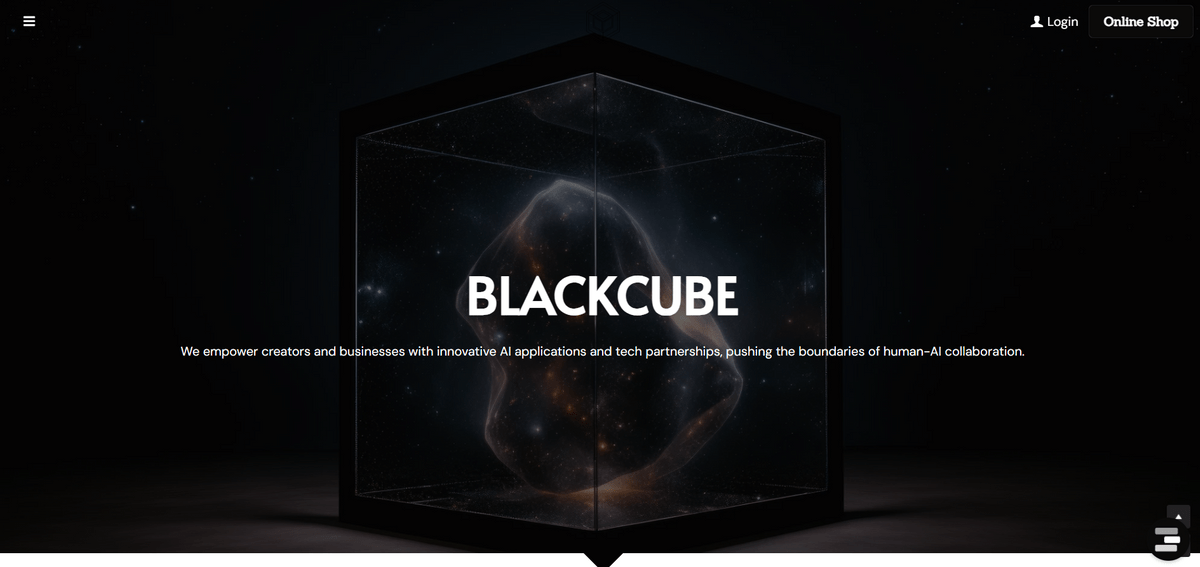Cracking The Customer Code: Navigating The Wild World Of Customer Research
Cracking The Customer Code: Navigating The Wild World Of Customer Research

Understanding customer research is crucial for success. By delving into the preferences and behaviors of your target audience, you can gain valuable insights that drive strategic decision-making and business growth. Customer research is gathering and analyzing data to understand better your customers, their needs, and how they interact with your products or services.
Understanding Customer Research
Customer research involves various methods such as surveys, interviews, and observation to gather information about consumer preferences and behaviors. This data gives businesses a deeper understanding of their target market, enabling them to tailor their offerings to meet customer needs effectively.
Customer research is essential for businesses looking to stay ahead in a competitive market. Companies can develop products and services that resonate with their audience by understanding what drives consumer behavior. This leads to increased customer satisfaction and boosts brand loyalty and, ultimately, the bottom line.
Importance of Customer Research
1. Understanding Customer Needs and Preferences
Customer research helps businesses understand their target audience's needs, preferences, and expectations. This understanding is essential for developing products and services that meet customer requirements.
2. Enhancing Customer Satisfaction
By identifying and addressing customer pain points, businesses can enhance customer satisfaction. Satisfied customers are more likely to become loyal and repeat buyers, contributing to long-term success.
3. Market Differentiation
Customer research allows businesses to identify unique selling points and areas of improvement. This information can differentiate products or services in the market, giving the company a competitive advantage.
4. Product Development and Innovation
Businesses can gather valuable feedback on existing products and services through customer research. This feedback aids in developing new and improved offerings, ensuring they meet or exceed customer expectations.
5. Effective Marketing Strategies
Understanding customer demographics, behaviors, and preferences helps craft targeted and effective marketing strategies. This ensures that promotional efforts resonate with the intended audience, leading to higher engagement and conversion rates.
6. Uncover Business Insights through Customer Research
Now that we've established the importance of customer research in business strategy development, let's dive deeper into the different methods used in this process.
What is Customer Research?
Image taken from Datable Services
Customer research gathers and analyzes customer needs, preferences, and behaviors to understand their motivations and make informed business decisions. Customer research aims to gain insights into customer satisfaction, improve products or services, and enhance overall customer experience.
Definition and Purpose
Customer research aims to give businesses a deeper understanding of their target audience, enabling them to tailor their offerings to meet specific needs. By gathering data on customer demographics, purchasing habits, and feedback, companies can create more effective marketing strategies and improve customer retention.
Customer research is crucial for identifying emerging trends and staying competitive. Businesses can uncover new product innovation and differentiation opportunities by analyzing customer feedback and behavior. This proactive approach to understanding the market can give companies a significant edge in today's fast-paced business environment.
Critical Considerations for Effective Research
1. Understanding the Purpose of Customer Research
Effective customer research begins with a clear understanding of its purpose. Before embarking on any study, businesses must define the specific goals and objectives they aim to achieve through customer research. Whether improving product features, refining marketing strategies, or enhancing customer satisfaction, a well-defined purpose sets the foundation for selecting appropriate customer research methods and ensuring meaningful outcomes.
2. Choosing Appropriate Customer Research Methods
The selection of customer research methods is crucial for obtaining reliable and relevant data. Depending on the research objectives, businesses can utilize diverse methods such as surveys, interviews, observational research, social media monitoring, and focus groups. Each technique offers unique insights, and the choice should align with the nature of the information sought, the target audience, and the resources available to conduct customer research effectively.
3. Defining the Scope of Customer Research
To conduct effective customer research, businesses must clearly define the scope of their study. This involves specifying the target demographic, geographic regions, and relevant market segments. A well-defined scope ensures that the research efforts are focused and provide insights directly applicable to the business's objectives. It also helps in managing resources efficiently and avoiding unnecessary data collection.
4. Ensuring Ethical Considerations in Customer Research
Ethical considerations are paramount in customer research to build trust with participants and maintain the integrity of the findings. This includes obtaining informed consent from participants, ensuring privacy and confidentiality, and transparently communicating the purpose of the research. Adhering to ethical standards not only safeguards the rights of participants but also enhances the credibility and reliability of the research outcomes.
5. Utilizing a Mix of Types of Customer Research
Businesses should employ a mix of customer research types to understand the customer landscape better. This could include market research, customer satisfaction, usability testing, brand perception, and
product development research. Each type serves a specific purpose, and integrating multiple approaches provides a comprehensive view, enabling businesses to address various aspects of their customer relations, from market trends to product performance and brand perception. A diversified research strategy ensures a well-rounded perspective for informed decision-making and strategic planning.
Customer Research Methods
Image taken from IMAD
When it comes to gathering valuable insights about your customers, there are several effective methods you can use. One of the most common approaches is through surveys and questionnaires. By creating targeted surveys, you can gather specific customer feedback regarding their preferences, satisfaction levels, and overall experience with your brand.
In addition to surveys, conducting in-depth interviews with your customers can provide a deeper understanding of their needs and expectations. This method allows for more personalized interactions, enabling you to uncover valuable insights that may not be captured through standardized survey questions.
Observation and monitoring are also crucial methods for customer research. By observing customer behavior in real-time or monitoring their interactions with your website or products, you can gain valuable insights into their preferences and decision-making processes.
1. Surveys and Questionnaires
Surveys and questionnaires are essential for gathering quantitative data about customer preferences, satisfaction levels, and overall experiences with a product or service. By designing well-crafted surveys that target specific aspects of the customer journey, businesses can gain valuable insights into areas for improvement and opportunities for growth.
Surveys and questionnaires can help businesses understand their target audience's changing needs and preferences. By consistently gathering feedback, companies can adapt their products or services to meet customer expectations better and stay ahead of the competition. Additionally, the survey data can support strategic decision-making and drive organizational innovation. Don't underestimate the power of a well-crafted study – it could be the key to unlocking new opportunities for your business.
2. In-depth Interviews
In-depth interviews provide a more qualitative approach to customer research by allowing businesses to engage in meaningful conversations with their customers. This method enables businesses to delve deeper into the motivations behind customer behavior, uncovering valuable insights that may not be captured through standardized survey questions alone.
In-depth interviews also allow businesses to build a stronger rapport with their customers, fostering a sense of trust and loyalty. By engaging in these meaningful conversations, companies can better understand their customers' needs and preferences, ultimately leading to more tailored products and services that resonate with their target audience. This approach benefits the business regarding customer satisfaction and retention and sets them apart from competitors who rely solely on standardized survey data.
3. Observation and Monitoring
Observation and monitoring involve actively observing and tracking customer behavior in real-time across various touchpoints such as websites, social media platforms, or physical stores. This method gives businesses direct insight into how customers interact with their brand, allowing them to identify patterns and trends that can inform strategic decision-making.
Observation and monitoring are essential for businesses to stay ahead of the game in today's fast-paced market. By actively tracking customer behavior, companies can adapt their strategies to meet the ever-changing demands of their audience. This real-time insight allows businesses to make informed decisions that can ultimately lead to increased customer satisfaction and loyalty.
Businesses can gain comprehensive insights into consumer behavior and preferences by leveraging these diverse customer research methods. This holistic approach allows for a deeper understanding of the target audience's needs and desires, empowering enterprises to make informed decisions that drive growth and success.
Conducting Customer Research
Image taken from Vencat
When mastering how to conduct customer research, the first step is identifying the target audience. This involves understanding your potential customers' demographics, behaviors, and preferences. You can gain valuable insights into your target audience's needs and desires by leveraging customer research methods such as surveys, interviews, and observation.
1. Target Audience Identification
Customer research methods like surveys and questionnaires can help identify the target audience by gathering data on their age, gender, location, income level, and purchasing habits. In-depth interviews provide a deeper understanding of their motivations and pain points. Observation and monitoring allow you to track customer behavior in real-time to identify patterns.
Once you have gathered all this valuable information about your target audience, it's time to put it to good use. By analyzing the data from surveys, interviews, and observations, you can tailor your marketing strategies to better resonate with your customers. This targeted approach will help you attract new customers and retain existing ones by addressing their specific needs and preferences.
2. Data Collection and Analysis
Once the target audience is identified, the next step is to collect and analyze data through various customer research methods. Surveys can be distributed via email or social media to gather quantitative data. In-depth interviews provide qualitative insights that can be analyzed for common themes or trends. Observational data can be collected through website analytics or tracking customer interactions.
Once the data is collected, it's crucial to analyze it effectively. This involves looking for patterns, trends, and correlations that can provide valuable insights into the behavior and preferences of the target audience. By understanding the data, businesses can make informed decisions and tailor their marketing strategies to meet the needs of their customers better.
3. Implementation of Findings
After mastering how to conduct customer research and analyze the data, it's crucial to implement the findings into your business strategy. This may involve changing your products or services based on customer feedback or adjusting marketing strategies to better appeal to your target audience's preferences.
Once you've implemented the findings from your customer research, it's essential to monitor and evaluate these changes' impact continually. This could involve tracking sales data, gathering customer feedback, or conducting follow-up surveys to ensure your adjustments have the desired effect. By staying proactive and responsive to customer needs, you can maintain a competitive edge in your industry and build long-lasting relationships with your target audience.
Businesses can gain valuable insights into their target audience's needs and preferences by mastering how to conduct customer research using various methods like surveys, interviews, and observation. This information can tailor products or services to more effectively meet those needs while informing marketing strategies for better engagement.
Types of Customer Research
Image taken from Unlocked Capital
1. Market Research
Market research is a fundamental type of customer research focusing on understanding the overall market dynamics, trends, and competitive landscape. It involves gathering and analyzing data related to the target market's size, demographics, preferences, and behaviors. By employing various customer research methods such as surveys, interviews, and data analysis, businesses can gain insights into market opportunities, potential challenges, and areas for growth. Market research lays the foundation for strategic decision-making, helping companies to tailor their products and services to meet the specific demands of their target audience.
2. Customer Satisfaction Research
Customer satisfaction research assesses the contentment and happiness customers experience with a product or service. Businesses can gather valuable insights into customer perceptions, expectations, and pain points through surveys, feedback forms, and interviews. Mastering how to conduct customer research allows companies to identify areas of improvement, enhance customer loyalty, and foster a positive brand image. By continuously monitoring and responding to customer satisfaction metrics, businesses can adapt and refine their offerings to better meet the needs of their clientele.
3. Usability Testing
Usability testing is a customer research method focused on evaluating a product or service's ease of use and user experience. By observing how customers interact with prototypes or existing products, businesses can identify usability issues, uncover user preferences, and refine the design to optimize functionality. Usability testing is especially crucial in industries where user interface and experience significantly impact customer satisfaction, such as software development, website design, and mobile applications.
4. Brand Perception Research
Brand perception research delves into how customers perceive a brand and its positioning in the market. This type of customer research aims to uncover customers' emotional connections, associations, and attitudes toward a brand. Businesses can gain insights into the factors that shape brand perception through surveys, focus groups, and social media monitoring. Understanding these perceptions allows companies to refine their brand messaging, differentiate themselves from competitors, and cultivate a positive brand image that resonates with their target audience.
5. Product Development Research
research involves gathering insights to inform the creation of new products or improvements to existing ones. By utilizing customer surveys, interviews, and prototype testing, businesses can understand customer preferences, identify unmet needs, and assess market demand. This type of research is essential for minimizing the risks associated with product launches and ensuring that the final offerings align with customer expectations. Product development research plays a pivotal role in innovation, helping businesses stay ahead of the curve and deliver solutions that meet evolving customer needs.
Build Your E-commerce Website With Us!
Image taken from Blackcube
Leveraging customer research is crucial for business growth. By understanding the needs and preferences of your target audience through customer research methods such as surveys, interviews, and observation, you can tailor your e-commerce website to meet their specific demands. This will enhance user experience and increase customer satisfaction and loyalty, ultimately leading to business expansion.
Leveraging Customer Research for Business Growth
Utilizing customer research allows you to gain valuable insights into consumer behavior, market trends, and competitive analysis. By incorporating these findings into developing your e-commerce website on Strikingly, you can create a user-friendly interface that resonates with your target audience. This tailored approach will result in higher conversion rates and increased sales, driving the growth of your online business.
Implementing Insights from Customer Research
Conducting thorough customer research lets you understand your potential customers' pain points and preferences. You can effectively address specific consumer needs by implementing these insights into the design, content, and functionality of your e-commerce website on Strikingly. This proactive approach enhances user satisfaction and sets your business apart from competitors in the online marketplace.
Significance of Customer Research in Decision-Making
Customer research is pivotal in decision-making processes for businesses operating in the digital landscape. By learning how to conduct customer research on market segmentation, customer behavior analysis, and competitive analysis, you can make informed decisions about product offerings, pricing strategies, and marketing tactics for your e-commerce website on Strikingly. This data-driven approach ensures that every business decision aligns with the needs and expectations of your target audience.
By leveraging customer research for business growth, implementing insights from customer research into website development on Strikingly, and recognizing the significance of customer research in decision-making processes, businesses can effectively tailor their e-commerce websites to meet specific consumer demands while gaining a competitive edge in the online marketplace.
Curious for more? Chat with us today!





